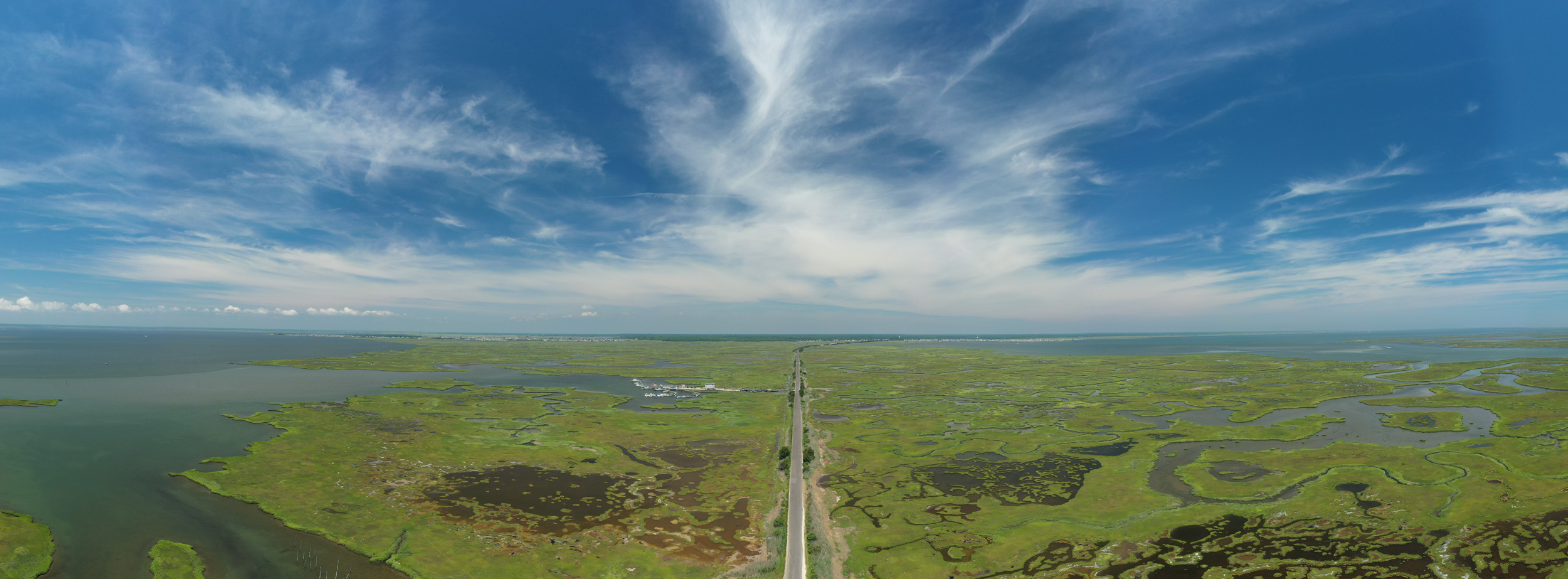Great Bay Boulevard: An Ecological Marvel
by CWF Great Bay Terrapin Project Volunteer Intern, Matthew McCall

This summer I had the opportunity to work as an intern for the Conserve Wildlife Foundation of New Jersey (CWF), researching and surveying Northern diamondback terrapins. Words could not describe how excited I was for this position, working with Senior Wildlife Biologist, Ben Wurst every day this summer was an incredible learning experience. Mr. Wurst taught me how to conduct surveys Great Bay Blvd Wildlife Management Area. This area is an ecological marvel, I witnessed hundreds of terrapins crossing the road on multiple occasions. I remember one day in particular when such a large quantity of terrapins were moving that it took me six hours to drive down that five-mile road, over two hundred terrapins were observed on Great Bay Boulevard that day alone.

While busy and hectic at times, I could not have asked for anything more from this experience, to work so closely with such a detrimental and largely overlooked member of our local ecosystem was a genuine pleasure. I enjoyed it when visitors would stop and ask me questions, I took advantage of each opportunity to explain CWF’s mission regarding the Terrapins and coaching the public on proper ways to assist these magnificent reptiles as they cross their local roads. While my time this summer with CWF is coming to an end, I will always look back fondly on the experiences I have had and the knowledge I have gathered on not only these amazing creatures, but conservation, public speaking, and wildlife management as a whole. Highlights of which include how to properly conduct wildlife surveys, how to hold and care for organisms, especially those that are injured, and most importantly, how to think like a scientist. I enjoyed deducing patterns and movements, based solely on times, weather conditions, and tidal stages, which in turn would shift my surveys and allow me to find the most desirable conditions for these Terrapins as they cross their roads to nest.

An added bonus of this internship was learning plant taxonomy, habitat monitoring, and nesting patterns, while in the local turtle garden which my co-worker and I helped to maintain, study, and monitor. Throughout all, I have learned and gone through while surveying, the most surprising thing I have come across would have to be the deep contrasts in color and patterns in these beautiful creatures. From charcoal gray to bright yellow to even a deep black, the colors, and patterns of terrapins never ceased to amaze me. I am confident that I will take all the knowledge and insight I gained through this internship and put it towards my desired career as a fisheries expert. With my now growing knowledge of integral marine ecosystems and conservation, I know this will help push my career forward and set me closer to my goals of protecting the waters and marine habitats that I love. I again cannot thank Mr. Wurst and CWF enough for allowing me this opportunity and experience, I will use everything I have learned to push me further in my career and continue to protect these amazing creatures.
Matthew McCall is going into his sophomore year of college at Frostburg State University, where he is studying Wildlife and Fisheries on the professional fisheries track. We can’t thank Matt for all of his hard work to help us conserve terrapins in the Great Bay estuary!
Work conducted with terrapins is under New Jersey Fish & Wildlife Scientific Collecting Permit # 2024080.
Discover more from Conserve Wildlife Foundation of NJ
Subscribe to get the latest posts sent to your email.